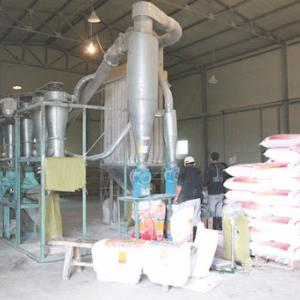Household Monthly Income Rises by MNT 119,300 from 2024
Economy
Ulaanbaatar, August 19, 2025
/MONTSAME/. The average monthly household income has
reached MNT 1.8 million, an increase of MNT 119,300 compared to the same period in 2024, according to the National Statistics Office of Mongolia.
Wages and
salaries accounted for 57.9 percent of household income, pensions and
allowances for 21.6 percent, agricultural production for 7.5 percent, other income for 7
percent, and non-agricultural production and services for 6 percent. Compared to 2024, the share of wages in household income has risen by 1.5 percentage
points, and that of non-agricultural production and services by 0.2 points,
while the share of pensions and allowances fell by 1.3 points, agricultural
production by 0.2 points, and other income by 0.2 points.
By income group, households are distributed as follows:
- 76,400 households with an income below MNT 700,000,
- 233,200 households with an income between MNT 700,000 and 1.6 million,
- 308,600 households with an income between MNT 1.6 million and 3 million,
- 387,000 households with an income above MNT 3 million.
Compared
to the same period in 2024, the number of households earning below MNT 700,000
decreased by 33,100; those earning between MNT 900,000 and 1.1 million by
17,500; between MNT 1.1 and 1.6 million by 7,700; between MNT 1.6 and 2.1
million by 2,700; and between MNT 2.1 and 3 million by 30,200. In contrast, the
number of households earning between MNT 700,000 and 900,000 rose by 4,500;
between MNT 3 and 4 million by 6,600; and above MNT 4 million by 89,700.
Among
low-income households earning up to MNT 700,000, pensions and allowances make
up 80.4 percent of total income, while among high-income households earning
above MNT 2.1 million, wages and salaries account for 66.3 percent.
The
average monthly household expenditure has reached MNT 2.8 million, an increase
of MNT 324,500 compared to 2024. Of this, MNT 1.9 million was spent on non-food
goods and services, MNT 515,900 on food products, MNT 301,000 on other
expenses, and MNT 56,700 on gifts and assistance.
The share
of food products in total household expenditure declined by 0.7 percentage
points, while spending on non-food goods and services increased by 0.5 points,
and gifts and assistance by 0.2 points.
Approximately 32.6 percent of food expenditure was on meat and meat products, 22.9 percent on cereals and flour products, 12.2 percent on dairy products and eggs, and 7.1 percent on vegetables, tubers, and leafy plants—together making up 74.7 percent of total food spending. Compared to 2024, the share of meat, dairy, and fruit in food expenditure rose, while cereals, vegetables, fats and oils, and sugar products declined.
Among
non-food spending, 10.1 percent went to fuel, spare parts, and maintenance of
vehicles; 7 percent to clothing and footwear; 6.4 percent to personal services;
6.2 percent to communications; 5.9 percent to medicines and medical services;
and 3.7 percent to footwear.
By
expenditure group:
- 29,100
households spent less than MNT 700,000,
- 226,200
households spent between MNT 700,000 and 1.6 million,
- 386,000
households spent between MNT 1.6 million and 3 million,
- 363,900
households spent above MNT 3 million.
Compared
to 2024, the number of households with expenditures below MNT 700,000 decreased
by 22,600; those spending between MNT 700,000 and 900,000 by 13,600; between
MNT 900,000 and 1.1 million by 15,500; and between MNT 1.1 and 1.6 million by
28,500. However, households spending between MNT 1.6 and 2.1 million increased
by 6,500; between MNT 2.1 and 3 million by 12,100; between MNT 3 and 4 million
by 32,600; and above MNT 4 million by 38,500.
At the national level, food products account for 27.6 percent of the average expenditure of households spending up to MNT 700,000, while for households spending above MNT 2.1 million, food accounts for 17.2 percent and non-food goods and services for 71.5 percent.

 Ulaanbaatar
Ulaanbaatar












































































